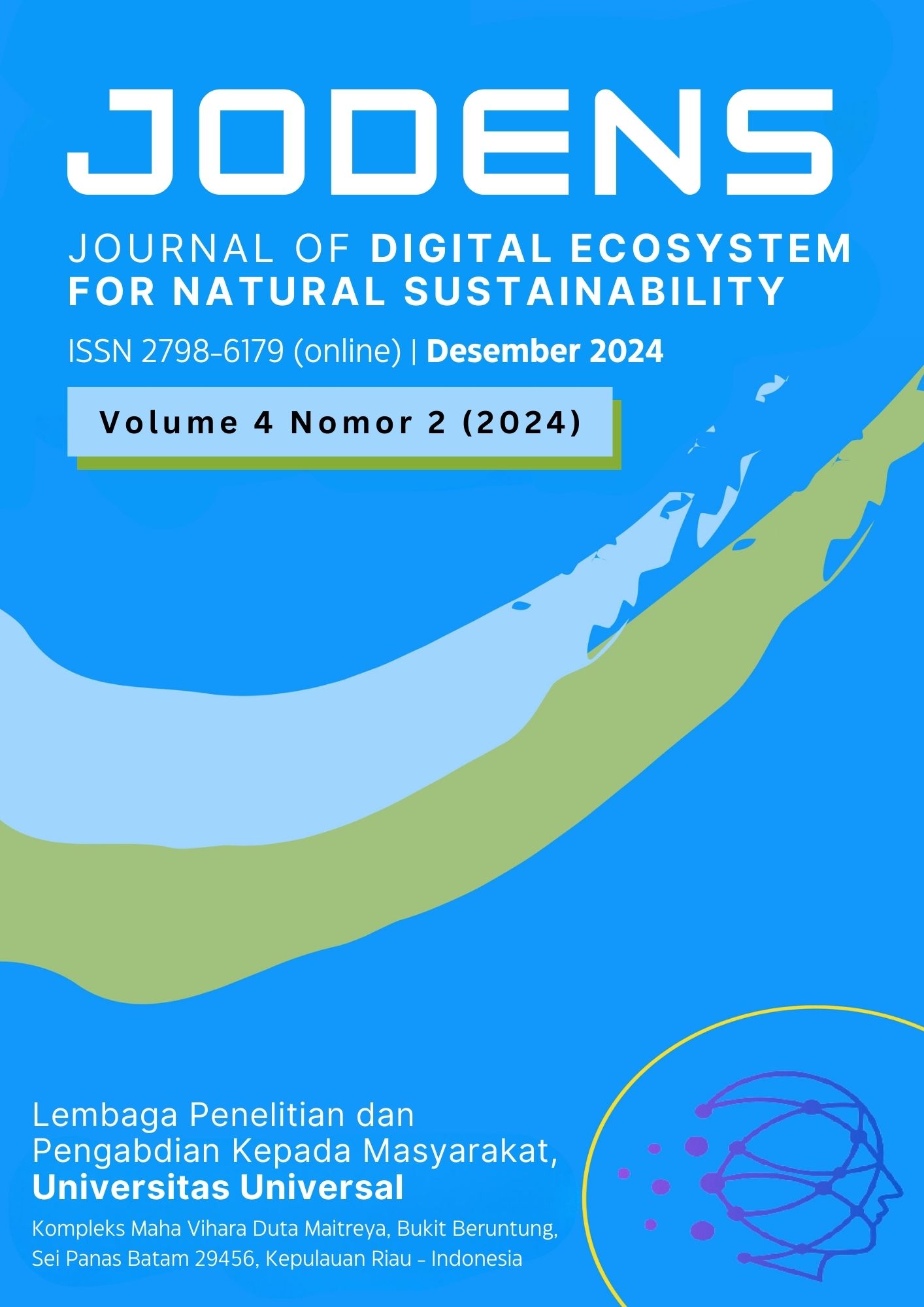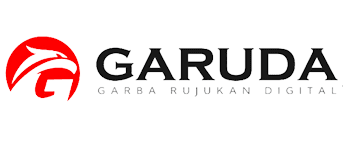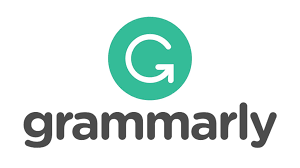Application of Augmented Reality in Animal Classification Based on Type of Food
DOI:
https://doi.org/10.63643/jodens.v4i2.259Keywords:
Animal Classification, Augmented Reality, MDLC, Unity, VuforiaAbstract
This study aims to design Augmented Reality (AR)-based learning media in animal classification based on their food types for elementary school students in Maitreyawira. By using Unity and Vuforia, this AR application is expected to provide an interactive and interesting learning experience for students. The method used in this study is the Multimedia Development Life Cycle (MDLC). The development process begins with the conceptualization stage, where an analysis of learning media needs is carried out through literature studies, interviews with teachers and students, and field observations. The results of the analysis are used to design the system and determine the specifications of the application to be developed. At the material collection stage, information regarding animal classification based on their food types is collected from various literature sources and interviews with biologists. The learning media creation stage is carried out using Unity as the main development platform and Vuforia for the implementation of AR technology. Testing is carried out to ensure that the application functions properly and meets user needs. Feedback from users, namely teachers and students. The results of this study are an AR application that can help students understand animal classification based on their food types more interactively and interestingly. This application is expected to increase students' interest and understanding of biology material, as well as provide a positive contribution to the learning process at Elementary School Maitreyawira.
References
Fizza Anwer, “Activity-Based Teaching, Student Motivation and Academic Achievement,” J. Educ. Educ. Dev., vol. 6, no. 1, pp. 154–170, 2019.
Silawati, T. K. Yeniningsih, and D. Amalia, “Pengembangan Media Activity Book Untuk Meningkatkan Nilai Karakter Mandiri Anak Usia Dini,” J. Ilm. Mhs. Pendidik. …, vol. 6, no. 2, pp. 1–9, 2021, [Online]. Available: http://www.jim.unsyiah.ac.id/paud/article/view/17600.
M. D. Kurnia, R. Arfiyanti, and Mudopar, “Desain Activity Book dalam Pembelajaran Menulis Kalimat Sederhana pada Siswa Tunarungu SLB Beringin Bhakti,” J. Pendidik. Kebutuhan Khusus, vol. 5, no. 2, pp. 127–134, 2021, doi: 10.24036/jpkk.v5i2.589.
K. H. Musliadi, A. Ismail, and A. Hasnining, “Optimalisasi Pembelajaran Melalui Aplikasi Interaktif di Pondok Pesantren XYZ Polewali Mandar,” J. Digit. Ecosyst. Nat. Sustain., vol. 4, no. 1, pp. 14–20, 2024.
Asrial, Syahrial, Maison, D. A. Kurniawan, and S. O. Piyana, “Ethnoconstructivism E-Module To Improve Perception, Interest, and Motivation of Students in Class V Elementary School,” JPI (Jurnal Pendidik. Indones., vol. 9, no. 1, p. 30, 2020, doi: 10.23887/jpi-undiksha.v9i1.19222.
N. K. L. Widarini, I. G. Margunayasa, and N. W. Rati, “Pop-Up Book Media Assisted By QR Code For Second-Grade Elementary School Students,” J. Lesson Learn. Stud., vol. 5, no. 3, pp. 439–447, 2022, doi: 10.23887/jlls.v5i3.47223.
S. Ghory and H. Ghafory, “The Impact of Modern Technology in the Teaching and Learning Process,” Int. J. Innov. Res. Sci. Stud., vol. 4, no. 3, pp. 168–173, 2021, doi: 10.53894/ijirss.v4i3.73.
T. Shenkoya and E. Kim, “Sustainability in Higher Education: Digital Transformation of the Fourth Industrial Revolution and Its Impact on Open Knowledge,” Sustain., vol. 15, no. 3, 2023, doi: 10.3390/su15032473.
M. Ponticorvo, E. Dell’Aquila, and R. Di Fuccio, “Hyper-Activity Books and Serious Games: How to Promote Experiential Learning beyond Distance,” Int. J. Environ. Res. Public Health, vol. 19, no. 17, 2022, doi: 10.3390/ijerph191711132.
F. Arena, M. Collotta, G. Pau, and F. Termine, “An Overview of Augmented Reality,” Computers, vol. 11, no. 2, 2022, doi: 10.3390/computers11020028.
M. KH, Kaharuddin, and V. Ihsan, “Ragam Hias Konsep Arsitektur Bangunan Atap Tionghoa Memanfaatkan Teknologi Augmented Reality,” J. FASILKOM, vol. 3, no. 13, pp. 398–405, 2023.
K. Kaharuddin, K. H. Musliadi, K. Hamidi, and I. Syafrinal, “Penerapan Augmented Reality Dalam Pengenalan Peralatan Manufaktur Pada Prodi Teknik Industri Universitas Universal,” J. Tekinkom (Teknik Inf. dan Komputer), vol. 7, no. 1, pp. 402–409, 2024.
N. Elmqaddem, “Augmented Reality and Virtual Reality in education. Myth or reality?,” Int. J. Emerg. Technol. Learn., vol. 14, no. 3, pp. 234–242, 2019, doi: 10.3991/ijet.v14i03.9289.
M. Perifanou, A. A. Economides, and S. A. Nikou, “Teachers’ Views on Integrating Augmented Reality in Education: Needs, Opportunities, Challenges and Recommendations,” Futur. Internet, vol. 15, no. 1, 2023, doi: 10.3390/fi15010020.
H. Chang et al., “Ten years of augmented reality in education: A meta-analysis of (quasi-) experimental studies to investigate the impact,” Comput. Educ., vol. 191, no. August, p. 104641, 2022, doi: 10.1016/j.compedu.2022.104641.
A. J. R. Desierto, “GoonAR: A Bilingual Children Storybook through Augmented Reality Technology Using Unity with Vuforia Framework,” Int. J. Adv. Trends Comput. Sci. Eng., vol. 9, no. 3, pp. 3681–3686, 2020, doi: 10.30534/ijatcse/2020/180932020.
K. Kaharuddin, Y. Pernando, M. Marfuah, and K. H. Musliadi, “Aplikasi Augmented Reality (AR) Sebagai Media Pembelajaran Sistem Rangka Manusia,” J. Inf. Syst. Res., vol. 4, no. 4, pp. 1168–1175, 2023.
N. El Barhoumi, R. Hajji, Z. Bouali, Y. Ben Brahim, and A. Kharroubi, “Assessment of 3D Models Placement Methods in Augmented Reality,” Appl. Sci., vol. 12, no. 20, 2022, doi: 10.3390/app122010620.
Herlinah and K. Musliadi, Pemrograman Aplikasi Android dengan Android Studio, Photoshop dan Audition. Jakarta: Elex Media Komputindo, 2019.
V. Zanger, M. Meißner, and P. A. Rauschnabel, “Beyond the gimmick: How affective responses drive brand attitudes and intentions in augmented reality marketing,” Psychol. Mark., vol. 39, no. 7, pp. 1285–1301, 2022, doi: 10.1002/mar.21641.
Y. S. Koh et al., “A review on augmented reality tracking methods for maintenance of robots,” J. Teknol., vol. 83, no. 1, pp. 37–43, 2020, doi: 10.11113/jurnalteknologi.v83.14907.
M. H. M. Jamrus and A. B. Razali, “Acceptance, Readiness and Intention to Use Augmented Reality (AR) in Teaching English Reading among Secondary School Teachers in Malaysia,” Asian J. Univ. Educ., vol. 17, no. 4, pp. 312–326, 2021, doi: 10.24191/ajue.v17i4.16200.
C. Rebollo, I. Remolar, V. Rossano, and R. Lanzilotti, “Multimedia augmented reality game for learning math,” Multimed. Tools Appl., vol. 81, no. 11, pp. 14851–14868, 2022, doi: 10.1007/s11042-021-10821-3.
Ö. Özeren, E. B. Özeren, S. M. Top, and B. Sultan Qurraie, “Learning-by-Doing using 3D printers: Digital fabrication studio experience in architectural education,” J. Eng. Res., p. 100135, 2023, doi: https://doi.org/10.1016/j.jer.2023.100135.
S. Sodikin, Y. Efendi, and Y. Yatimollah, “Implementation of the Multimedia Development Life Cycle in Making Educational Games About Indonesia,” CESS (Journal Comput. Eng. Syst. Sci., vol. 8, no. 2, p. 595, 2023, doi: 10.24114/cess.v8i2.48870.
A. Ismail and K. H. Musliadi, “Analisis Kebutuhan dan Perancangan Sistem Informasi Administrasi Kependudukan untuk Meningkatkan Efisiensi Layanan di Kelurahan Paropo,” J. Digit. Ecosyst. Nat. Sustain., vol. 3, no. 2, pp. 58–63, 2023.
Lifa Farida Panduwinata, Ruri Nurul Aeni Wulandari, and Mokhammad Nurrudin Zanky, “Pengembangan Media Pembelajaran Berbasis Augmented Reality (AR) pada Materi Prosedur Penyimpanan Arsip,” Lect. J. Pendidik., vol. 12, no. 1, pp. 15–28, 2021, doi: 10.31849/lectura.v12i1.5958.
D. Aldo, M. Ilmi, and H. Hariselmi, “Pengembangan Multimedia Interaktif Hewan Berbisa dengan Metode Multimedia Development Life Cycle,” J. Inf. Syst. Res., vol. 4, no. 2, pp. 364–373, 2023, doi: 10.47065/josh.v4i2.2669.
W. E. Widiati, M. Murhadi, and W. T. Saputro, “Pengembangan Media Pembelajaran Interaktif Sistem Tata Surya Menggunakan Metode Multimedia Development Life Cycle,” J. Rekayasa Teknol. Inf., vol. 7, no. 2, p. 197, 2023, doi: 10.30872/jurti.v7i2.13426.
I. Benawan, D. M. K. Nugraheni, B. Noranita, and G. Aryotejo, “Digital Education Game for TK-A Level Students Using Multimedia Development Life Cycle Method,” INTENSIF J. Ilm. Penelit. dan Penerapan Teknol. Sist. Inf., vol. 7, no. 1, pp. 68–83, 2023, doi: 10.29407/intensif.v7i1.18671.
K. Subarkah, M. Azrino Gustalika, and P. Ananda Raharja, “Augmented Reality Based Image Tracking for Introduce Puppet Shadow Traditional Musical Instrument,” J. Tek. Inform., vol. 4, no. 1, pp. 205–216, 2023, doi: 10.52436/1.jutif.2023.4.1.376.
P. Ambarwati and P. S. Darmawel, “Implementasi Multimedia Development Life Cycle Pada Aplikasi Media Pembelajaran Untuk Anak Tunagrahita,” Maj. Ilm. UNIKOM, vol. 18, no. 2, pp. 51–58, 2020, doi: 10.34010/miu.v18i2.3936.
Downloads
Published
How to Cite
Issue
Section
License
Copyright (c) 2024 Steve Regan

This work is licensed under a Creative Commons Attribution 4.0 International License.
















